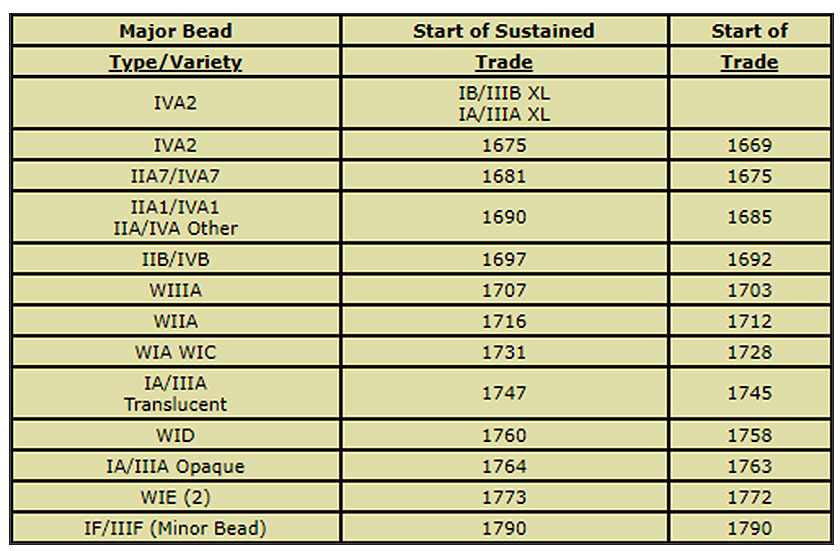
Glass Bead Chronology - Dating
The major sequenced beads are listed on Table 6. Note that IIA1/IVA1 & IIA/IVA Other and WIA & WIC are sequenced as temporal equals. Any combination of these major beads could be selected for dating. The most consistent results were produced when using IIAI/IVA1 and WIA, which appeared in more features.
For dating, the numeric graphical value for each major bead in succession was noted, beginning with IIA1/IVA1. The numeric value from the graphs "w/o Exclusives" was used as the exclusive bead features do not demonstrate association. The inverse of these values were used to develop a ratio using the beginning (either 1685 or 1690) and ending (1790) dates provided; thereby, a date for each major sequenced bead was determined.
For the major beads outside the beginning/ending dates, IVA2 and IIA7/IVA7, their dates were determined by simple ratios to IIA1/IVA1. Table 7 reflects the dates determined for each major glass bead.
Table 7 The Major Bead Dates
The "Start of Trade" dates present the Chickasaw as the active instigator/merchants of trade as opposed to the Carolina planters. The "Start of Trade" chronology means that major glass bead trade started at or before the founding of Charleston.
That is predictable, as Marquette (Malone 1922 233) noted that the Chickasaw had trade items in 1673. The Chickasaw had another source of trade, the Spanish Missions of Florida or Indians who traded there. Certainly, "Spanish" style iron hoes are common artifacts among the Chickasaw.
We have noted two earlier minor beads that could contribute to the chronology, IB/IIIB I XL and IA/IIIA XL. Certainly, these must have Spanish contexts. If dated to IIA1/IVA1 by ratios, then IB/IIIB XL and IA/IIIA XL would date to 1665.
While there are a number of Trade Lists from Carolinian (and Georgian) and French sources, few have any descriptive details about the glass beads. One (MPA I 53) list includes, "White, blue, yellow and agate beads, very large." Perhaps this reference addresses our WIA and WIC bead types. The list dates to the latter part of 1729. Our 'Start of Trade' date for these beads is 1728.
